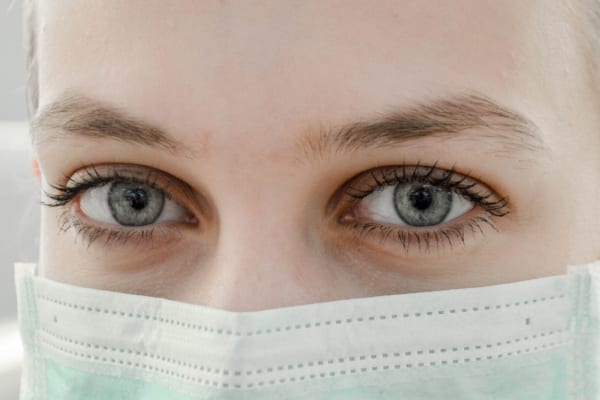Ocular Manifestations of COVID-19
The experts at Moorfield’s Eye Hospital Dubai examine the relationship between COVID-19 and eye health.
The impact of COVID-19 on the world is evident. While there is still a lot that is unknown about the virus, experts are working diligently to find explicit evidence on how the virus behaves.
During the early stages, the emergence of the Novel Coronavirus raised concerns across many health sectors. As the virus spread globally, the list of associated symptoms expanded as well, which further raised a lot of questions among the public about how the virus affects the host.
One of the reoccurring concerns during the peak of the pandemic was the connection between eye health and COVID-19.
With the proximity of eye health professionals to patients during eye examinations and reports that the virus could cause conjunctivitis and could be transmitted directly through the eye, ophthalmologists were at the centre of COVID-19 discussions.
COVID-19’s effect on the eyes
COVID-19 can enter the body through the eyes just as it does through the mouth or nose. There is an equally prevalent possibility of infecting the eyes via particles spread through coughing, sneezing, or even by talking with an infected person at close proximity. One’s eyes can also get infected if they touch an infected surface and then rub their eyes. This is extremely dangerous as the virus could also potentially access the body and infect the lungs through the eyes.
In fact, Coronaviruses in general and COVID-19, in particular, can lead to conjunctivitis if the virus gets transmitted directly to the eye.
Conjunctivitis can lead to the production of a sticky or runny discharge from the eye, triggering the condition commonly known as a pink eye infection.
In this case, patients with COVID-19 should look out for symptoms such as redness and swelling in the eyes along with excessive tearing and irritation. One should ensure receiving proper treatment if they experience any of these symptoms to stop the virus from spreading to other organs.
Individuals at Risk
People who have chronic diseases and low immune systems may be at higher risk of experiencing eye-related symptoms of COVID-19 than others.
Maintaining Eye Health
Just like any virus, COVID-19 will need to run its course even if it infects the eyes. However,
Additionally, COVID-19
Consulting an Ophthalmologist
People who suspect they may have contracted COVID-19 should opt to get tested for the virus to confirm their condition. If the test result is positive, then one needs to seek further examination of any suspected Corona Virus related eye ailments with their ophthalmologist using a virtual platform. Online consultation is an excellent way to allow the patient to get advice from the ophthalmologist on how to take care of their eyes until the infection resolves through the active immune system.






